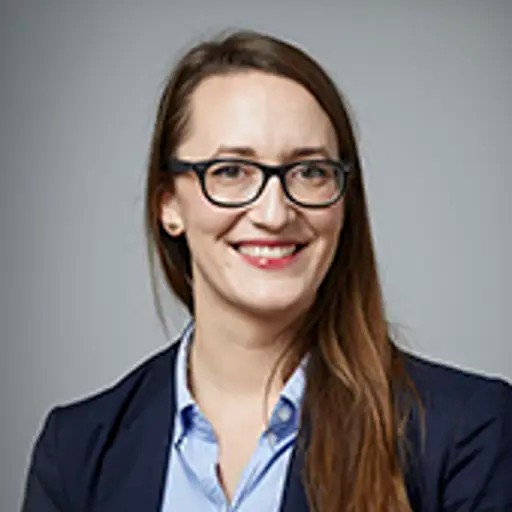Course syllabus adopted 2021-02-26 by Head of Programme (or corresponding).
Overview
- Swedish nameKondenserade materiens fysik
- CodeFKA091
- Credits7.5 Credits
- OwnerMPPHS
- Education cycleSecond-cycle
- Main field of studyEngineering Physics
- DepartmentPHYSICS
- GradingTH - Pass with distinction (5), Pass with credit (4), Pass (3), Fail
Course round 1
- Teaching language English
- Application code 85139
- Block schedule
- Open for exchange studentsYes
Credit distribution
Module | Sp1 | Sp2 | Sp3 | Sp4 | Summer | Not Sp | Examination dates |
|---|---|---|---|---|---|---|---|
| 0199 Examination 7.5 c Grading: TH | 7.5 c |
|
In programmes
- MPNAT - NANOTECHNOLOGY, MSC PROGR, Year 1 (elective)
- MPPHS - PHYSICS, MSC PROGR, Year 1 (compulsory elective)
Examiner
 Julia Wiktor
Julia Wiktor- Associate Professor, Condensed Matter and Materials Theory, Physics
Eligibility
General entry requirements for Master's level (second cycle)Applicants enrolled in a programme at Chalmers where the course is included in the study programme are exempted from fulfilling the requirements above.
Specific entry requirements
English 6 (or by other approved means with the equivalent proficiency level)Applicants enrolled in a programme at Chalmers where the course is included in the study programme are exempted from fulfilling the requirements above.
Course specific prerequisites
Basic knowledge regarding crystal structure, lattice vibrations in periodic structures and corresponding thermic properties. This knowledge may have been obtained through Solid state physics (FFY012) or correspondingly.Aim
The course will introduce the students to phenomena, concepts and methods of central importance to condensed matter physics. The emphasis will be on experimental observations and theoretical models that have significantly contributed to the progress of the field. The focus will be on quantum mechanics-based microscopic models that are employed to account for properties associated with electrons, phonons, and photons as well as their interactions that are important for optics, electron dynamics, and diffusion.Learning outcomes (after completion of the course the student should be able to)
- Recognize the main concepts of condensed matter physics including the introduction
of quasi-particles (such as excitons and phonons) and approximations
(such as Born-Oppenheimer and Hartree-Fock)
- Define the many-particle Hamilton operator in the formalism of second
quantization
- Calculate the electronic band structure of nanomaterials
- Realize the potential of density matrix and density functional theory
- Explain semiconductor Bloch and Boltzmann scattering equation
- Be able to describe the optical finger print of nanomaterials
- Recognize the main steps in the carrier relaxation dynamics in nanomaterials
including carrier-carrier and carrier-phonon scattering channels
- Be able to explain the many-particle mechanism behind the occurrence of superconductivity
Content
- Introduction in main concepts of condensed matter physics (quasi-particles, Born-Oppenheimer approximation
- Electronic properties of solids (Bloch theorem, electronic band
structure, density of states)
- Electron-electron interaction (second quantization, Jellium and
Hubbard models, Hartree-Fock approximation, screening, plasmons,
excitons)
- Lattice properties of solids (optical and acoustic phonons, Einstein
and Debye model)
- Electron-phonon interaction (Froehlich coupling, polarons,
superconductivity, electron transport)
- Optical properties of solids (electron-light interaction, absorption
spectra)
- Density matrix theory (statistic operator, semiconductor Bloch
equations, Boltzmann scattering equation)
- Guest lectures on density functional theory and topological insulators
Organisation
The course is based on a series of lectures and obligatory home problems covering the topics listed above.
Literature
- Fundamentals of many-body physics by Wolfgang Nolting (Springer Verlag, 2009)
- Quantum theory of the optical and electronic properties of semiconductors by Hartmut Haug and Stephan W. Koch (World Scientific Publishing, 2009)
- Quantum Optics by Marlan Scully (Cambridge University Press, 1997)
- Semiconductor Quantum Optics by Mackillo Kira and Stephan W. Koch (Cambridge University Press, 2012)
- Graphene and Carbon Nanotubes: Ultrafast Optics and Relaxation Dynamics by
Ermin Malic and Andreas Knorr (Wiley-VCH, 2013)
Supplementary material will be distributed during the course
Examination including compulsory elements
Obligatory home problems and an oral exam at the end of the course. One needs to reach 60% in home problems to be eligible for the oral exam.
The course examiner may assess individual students in other ways than what is stated above if there are special reasons for doing so, for example if a student has a decision from Chalmers about disability study support.